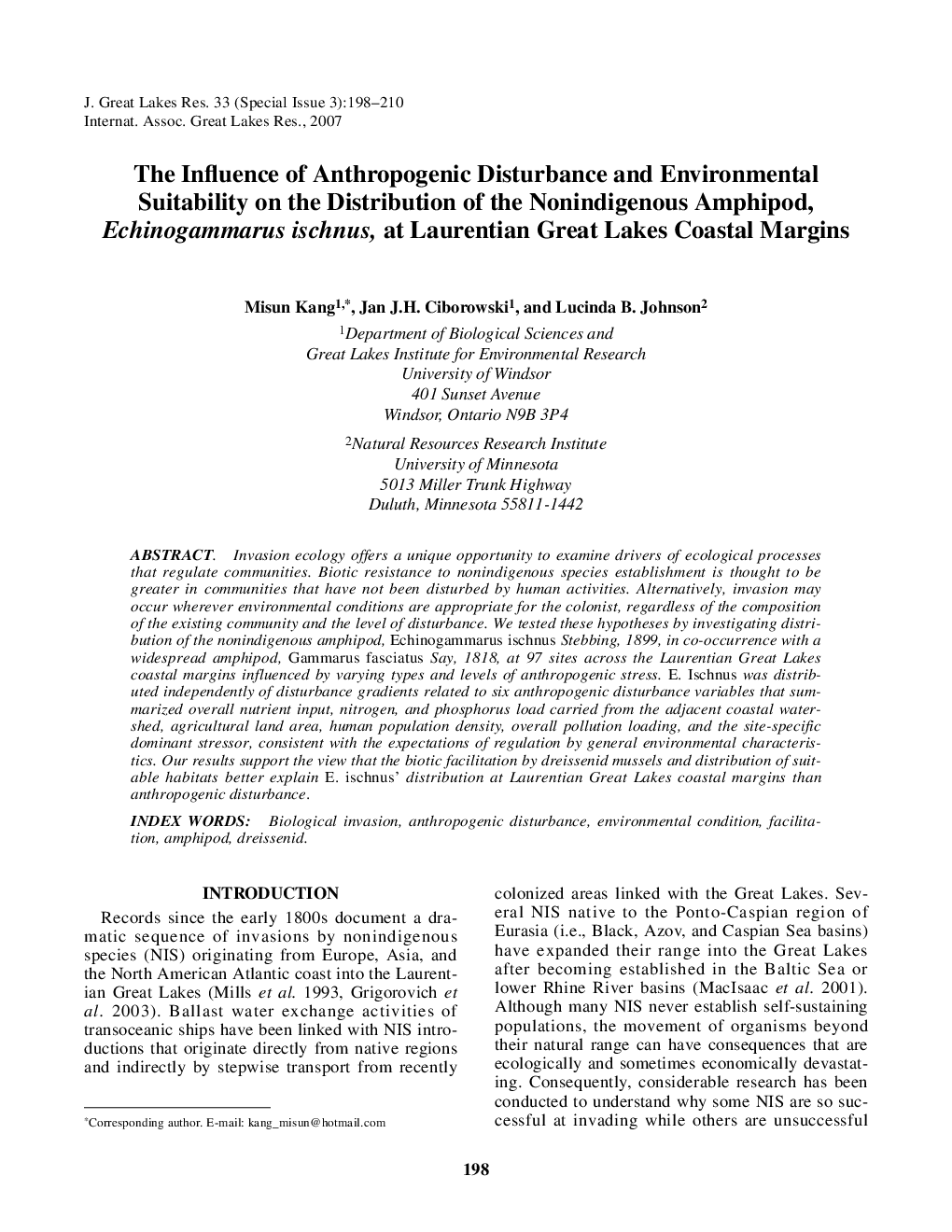| Article ID | Journal | Published Year | Pages | File Type |
|---|---|---|---|---|
| 4399457 | Journal of Great Lakes Research | 2007 | 13 Pages |
Abstract
Invasion ecology offers a unique opportunity to examine drivers of ecological processes that regulate communities. Biotic resistance to nonindigenous species establishment is thought to be greater in communities that have not been disturbed by human activities. Alternatively, invasion may occur wherever environmental conditions are appropriate for the colonist, regardless of the composition of the existing community and the level of disturbance. We tested these hypotheses by investigating distribution of the nonindigenous amphipod, Echinogammarus ischnus Stebbing, 1899, in co-occurrence with a widespread amphipod, Gammarus fasciatus Say, 1818, at 97 sites across the Laurentian Great Lakes coastal margins influenced by varying types and levels of anthropogenic stress. E. Ischnus was distributed independently of disturbance gradients related to six anthropogenic disturbance variables that summarized overall nutrient input, nitrogen, and phosphorus load carried from the adjacent coastal watershed, agricultural land area, human population density, overall pollution loading, and the site-specific dominant stressor, consistent with the expectations of regulation by general environmental characteristics. Our results support the view that the biotic facilitation by dreissenid mussels and distribution of suitable habitats better explain E. ischnus' distribution at Laurentian Great Lakes coastal margins than anthropogenic disturbance.
Keywords
Related Topics
Physical Sciences and Engineering
Earth and Planetary Sciences
Earth and Planetary Sciences (General)
Authors
Misun Kang, Jan J.H. Ciborowski, Lucinda B. Johnson,
